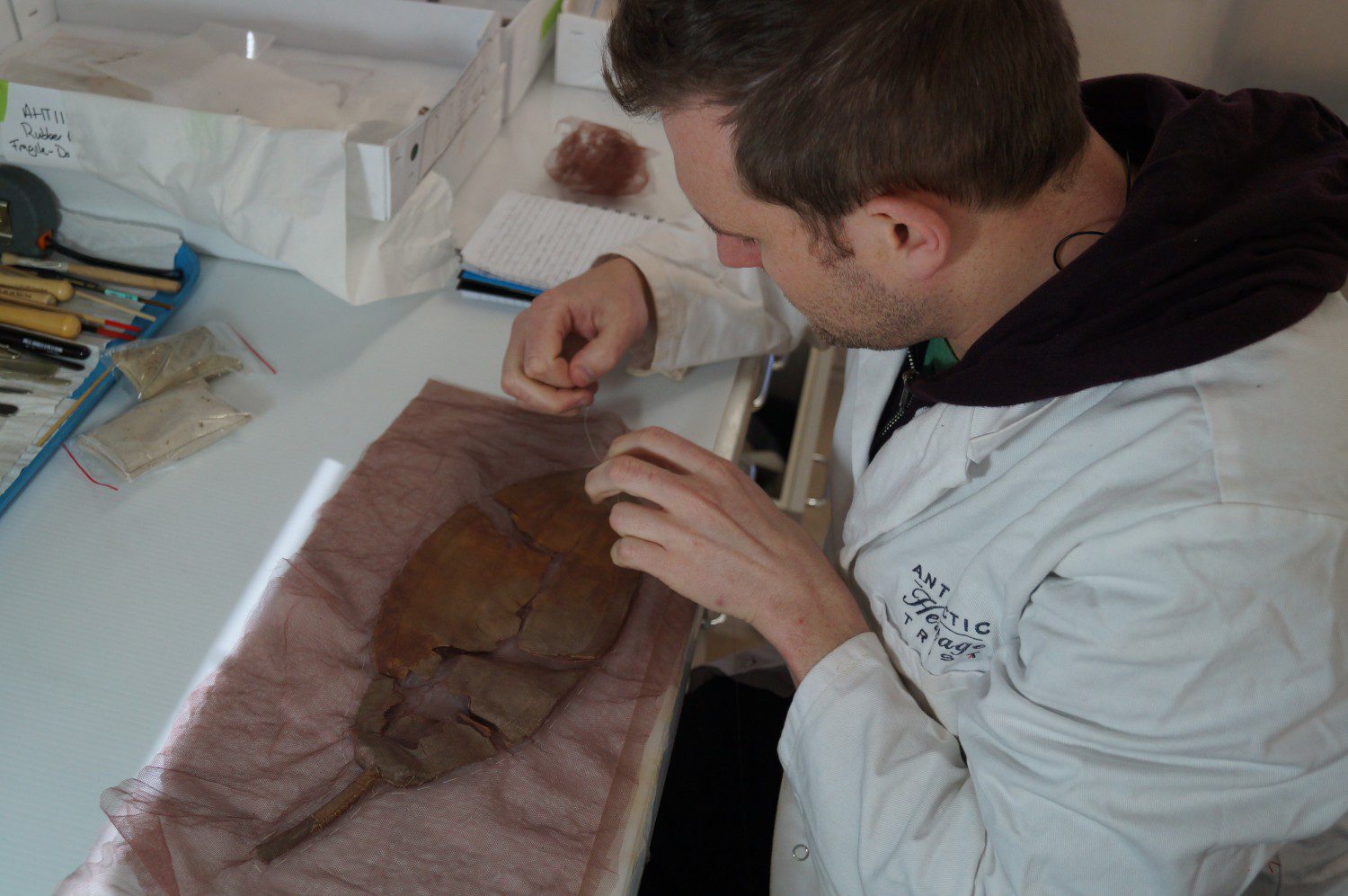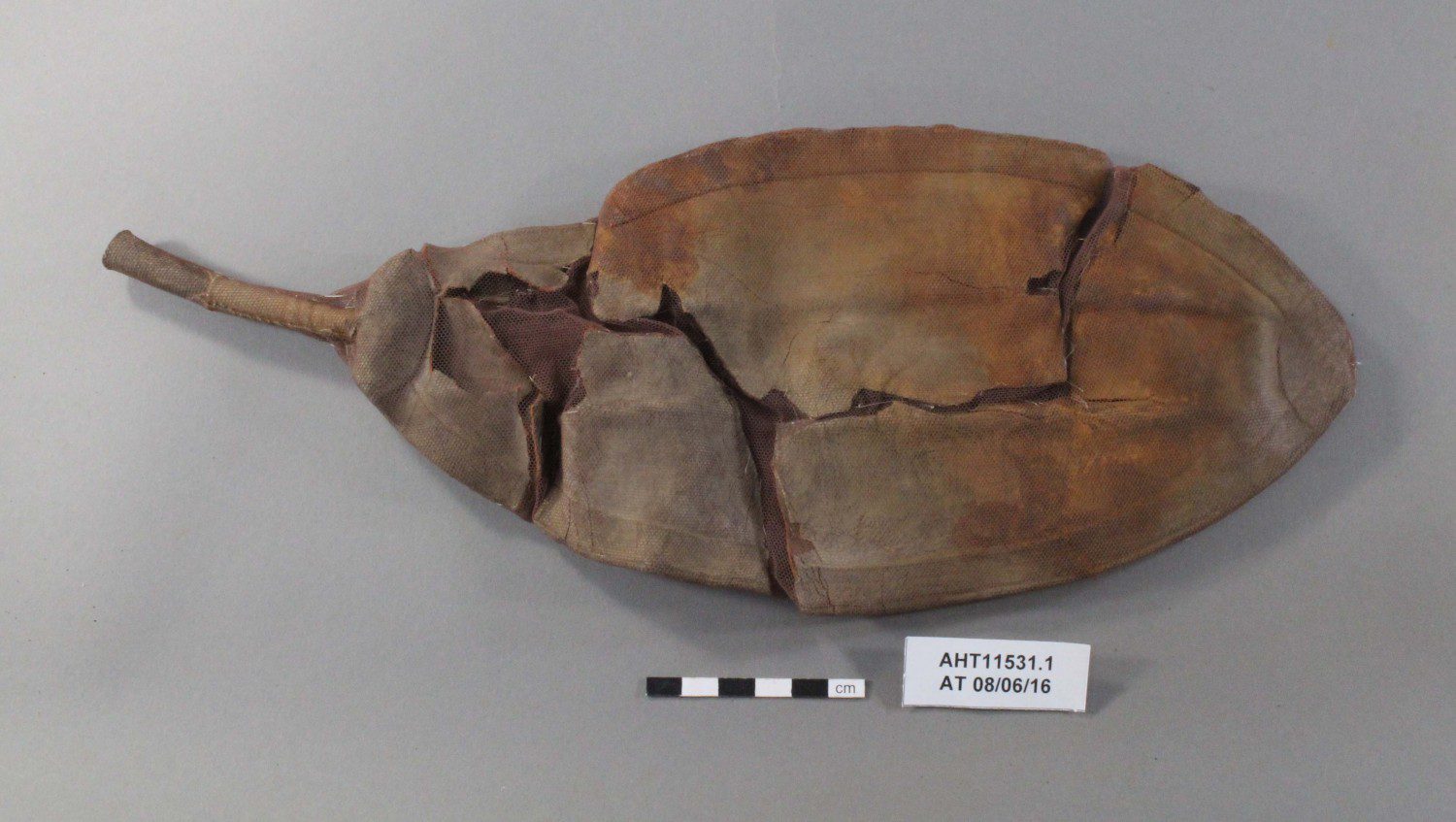Fighting Fit at 30 Below
By Ciarán Lavelle
The men of Scott’s 1910 expedition would have been at the peak of their physical fitness on the eve of their expedition south. The harshness and physical demands of not just their sea journey but also their time in the icy south required a great deal of both mental and physical strength and stamina to face the trials and tribulations of such a harsh foreboding environment. In our modern fitness and gym-obsessed world it is interesting to think about these virile men and how they organised their own fitness regimes to keep their strength and stamina at the required level.
 Antarctic Heritage Trust
Antarctic Heritage Trust The punching ball before conservation.
This highly degraded rubber object is a fascinating insight into one aspect of their potential fitness regime. Initially documented as being the bladder of a rugby ball it has captured the imagination of the New Zealand Antarctic Heritage Trust team due to the nation’s obvious obsession with the sport. Unfortunately for those rugby enthusiasts among us our initial zeal was dashed as it was discovered that it is not in fact a rugby ball but a punching ball. Renewed excitement followed at the realisation that this may be the very punching ball described in Raymond E Priestley’s personal account of Scott’s Northern Party. Priestley recounts the importance of strenuous exercise for team mate Abbott who turned the old Southern Cross hut into his personal gym for Swedish exercises (our own resident Swedish teammate is still trying to figure out what exactly they are).
Priestley has this to tell us about the ball itself:
‘We had brought a punching-ball with us from the Terra Nova, and for some time this afforded us quite a lot of exercise, but so soon as the temperature fell the rubber of the ball became brittle and useless and a puncture soon followed. It was no use attempting to mend this, and so we did the next best thing. The ball was stuffed with seaweed and from the Gibson Quilting, and though it was very lifeless it was very lifeless it was still of some use.’
 Antarctic Heritage Trust
Antarctic Heritage Trust Ciarán creating a protective mount for the punching ball.
The historical account of the damage the ball has suffered links up with the physical condition of the remaining fragments of the ball. Although the majority of the ball has been lost, what remains is a fragile and brittle jigsaw. The nature of the degraded rubber limits what we can do to the object and since the damage is historical it was decided that stabilisation and display of the object in a way that it can be identified as a punching ball was the best option. The fragments were sandwiched between two layers of a netting and each fragment was sewn into its own individual pocket so as to keep them contained and protected.
 Antarctic Heritage Trust
Antarctic Heritage Trust The punching ball after conservation.
The end result is that we can display the ball in a way that it can be identified while being protected from further loss from fragmentation. Now when I look the ball I can picture fragments of seaweed and rubber falling to the floor as the members of Scott’s Northern Party took their turn to pummel it by candlelight in the gloom of the Southern Cross hut so as to keep fighting fit in the freezing Antarctic cold.


 Antarctic Heritage Trust
Antarctic Heritage Trust